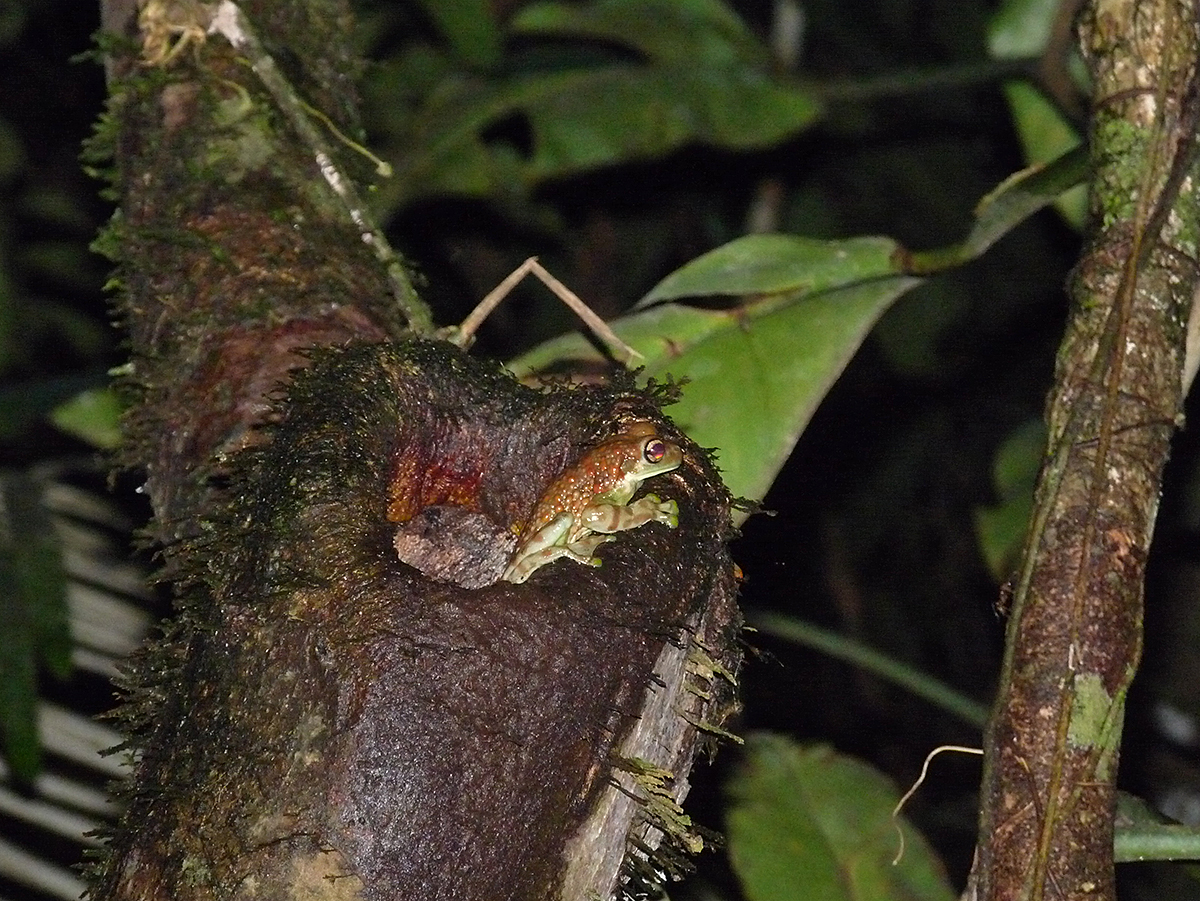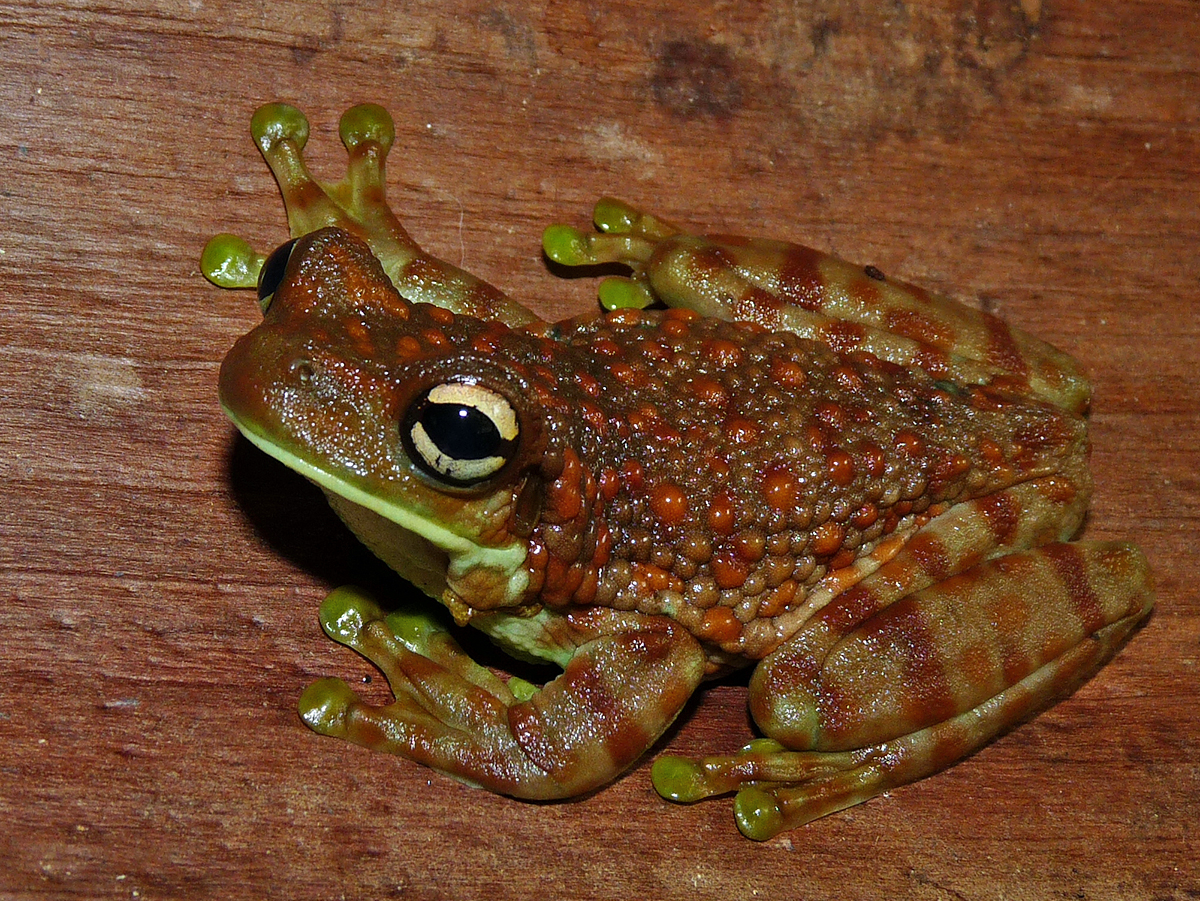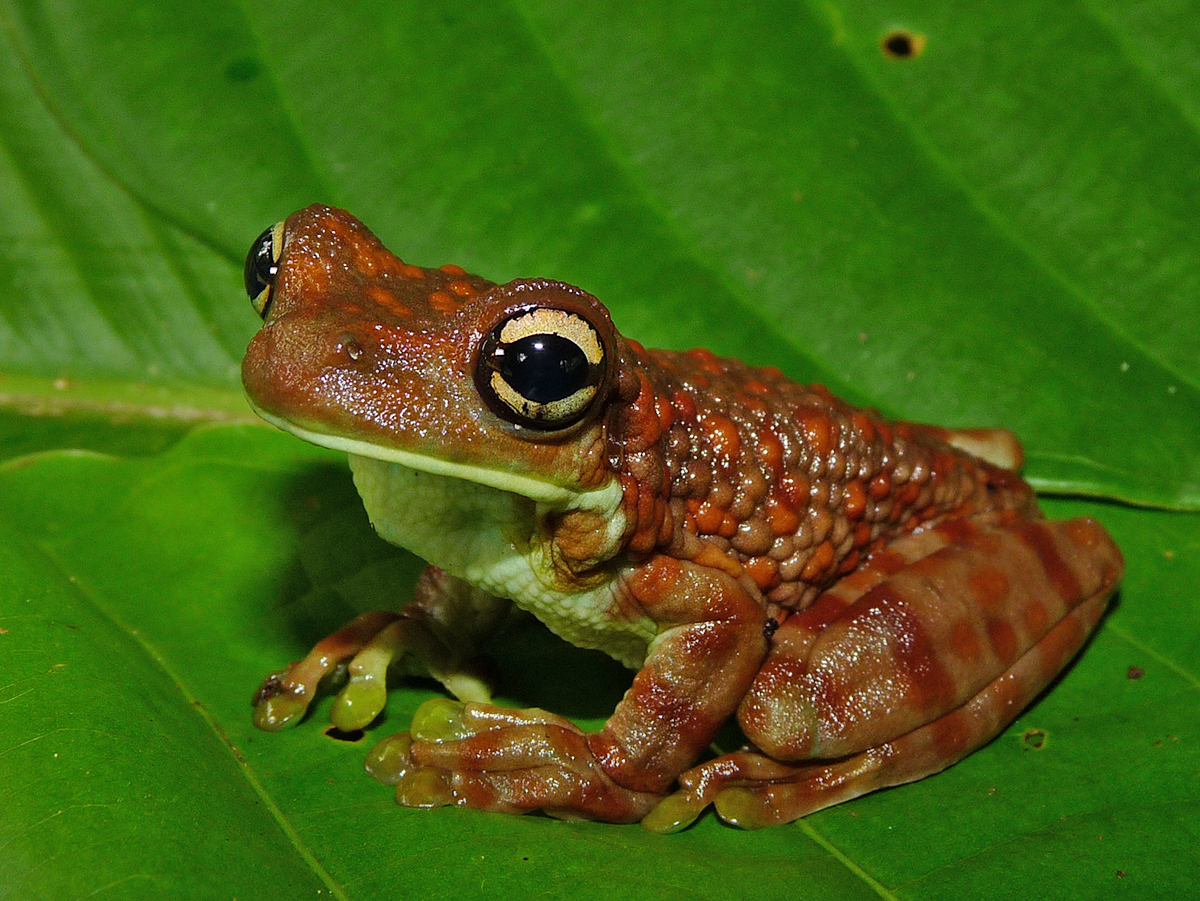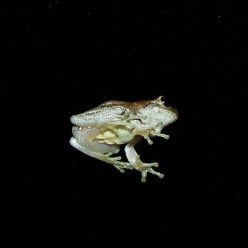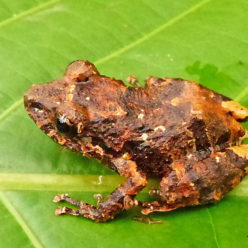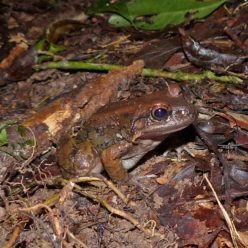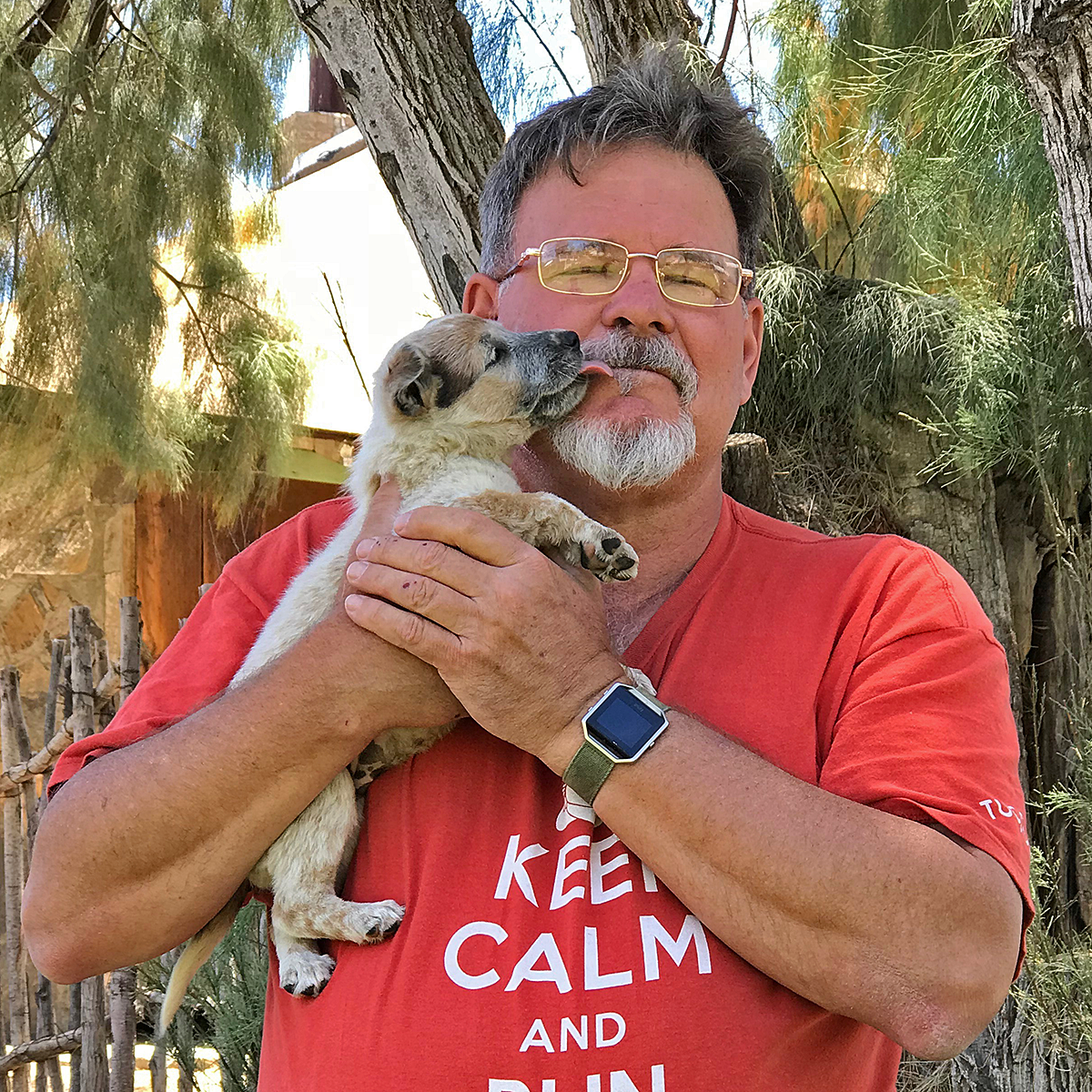Trachycephalus cunauaru
Gordo, Toledo, Suárez, Kawashita-Ribeiro, Ávila, Morais, and Nunes, 2013
Santa Cruz field station, Depto Loreto, Peru. January 15, 2011.
This species breeds in stump-holes left behind when a vertical branch breaks off, and the males guard their stump-holes, while calling females in. Walking the trails at night, we could hear the male T. cunauaru calling from their high perches in the trees – ‘wuuuurk, wuuuurk, wuuuurk‘. Attempts were made to locate these frogs, without success. Finally, a likely looking tree with a stump-hole was found close to the trail, and when the trunk was tapped with snake tongs, the frog popped up out of the hole to see what all the fuss was about! A nudge with the tongs and the frog leaped right into our waiting hands. It was one of the highlights of my first Peruvian trip, and one of the more beautiful frogs as well.
The frogs from this section of Peru were considered to be Trachycephalus resinifictrix until Gordo et al. 2013 elevated them to a separate species. From the paper that describes T. cunauaru comes this tidbit:
Etymology.—The specific indeclinable epithet,’cunauaru‘ is an adjectival word (from a polysynthetic language), given from the terms of the Amazonian Indian popular language ‘cunha˜,’ meaning ‘wife’, and ‘aru‘, meaning ‘toad’ (see Goeldi, 1907). This is the name given by local Amazonian natives to the populations of Trachycephalus cunauaru and T. resinifictrix (Teixeira and Papavero, 2010). According to Goeldi (1907), this name seems to be an onomatopoeic popular name in allusion to the behavior of ‘always call for the female when the moon shines.’
